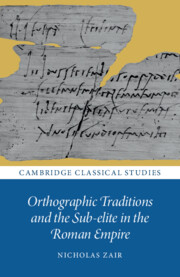The wax tablets from Herculaneum, presenting a corpus very similar in use and purpose to that of the TPSulp. tablets, contain a very small number of apices, consisting of 16 instances on 14 words across 5 tablets (out of a total of 40 documents, including one copy). For the sake of completeness, I give all examples below this paragraph. 12 examples out of 16 are on long /aː/ and /ɔː/, 1 is on /ɔ/ arising by iambic shortening, 1 is on /ɔ/, 1 is on /ae̯/, and 1 is on /uː/. It is a remarkable coincidence that one of the words is pálós, one of the examples used by Quintilian of where an apex is appropriate. No overarching rationale for the use of apices arises, particularly given the extremely fragmentary material. Some instances are on personal or place names. In TH2 77 + 78 + 80 + 53 + 92, the sequence egó meós palo[s CCCXXX] caesós á te begins a record of direct speech which could be being marked off; but the same is not true of the other instances of apices in the text. We do find prepositional phrases receiving an apex on one or other of their members in á se, á te, and perhaps in contro]uersiá, but this still leaves pálós.
TH2 5 + 99, AD 60: suá
TH2 77 + 78 + 80 + 53 + 92, AD 69: á, pálós, contro]uersiá, egó, meós, caesós, á
TH2 61: Erastó, Pompeianó
TH2 A8, before AD 62–63: Calátório
TH2 A12, early 60s AD: factáe, Iúni Tḥeóphilì



